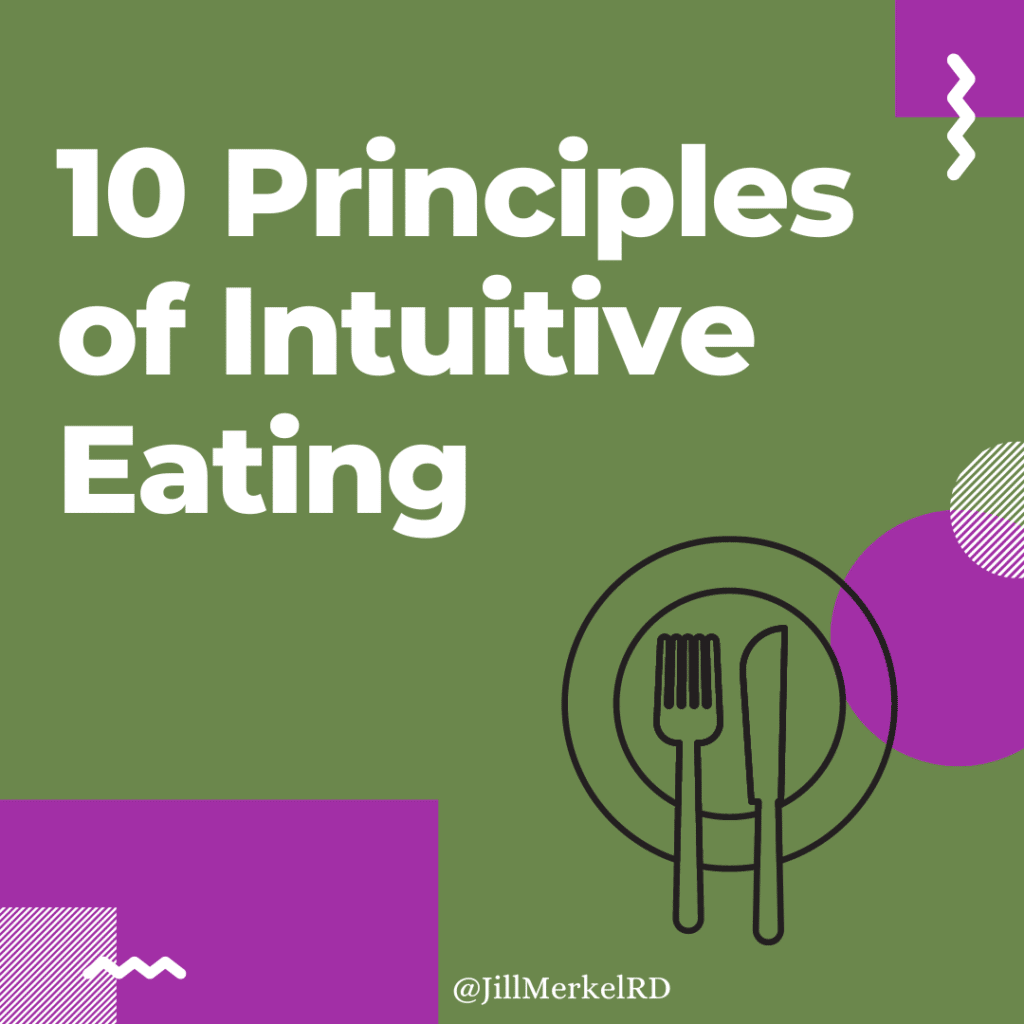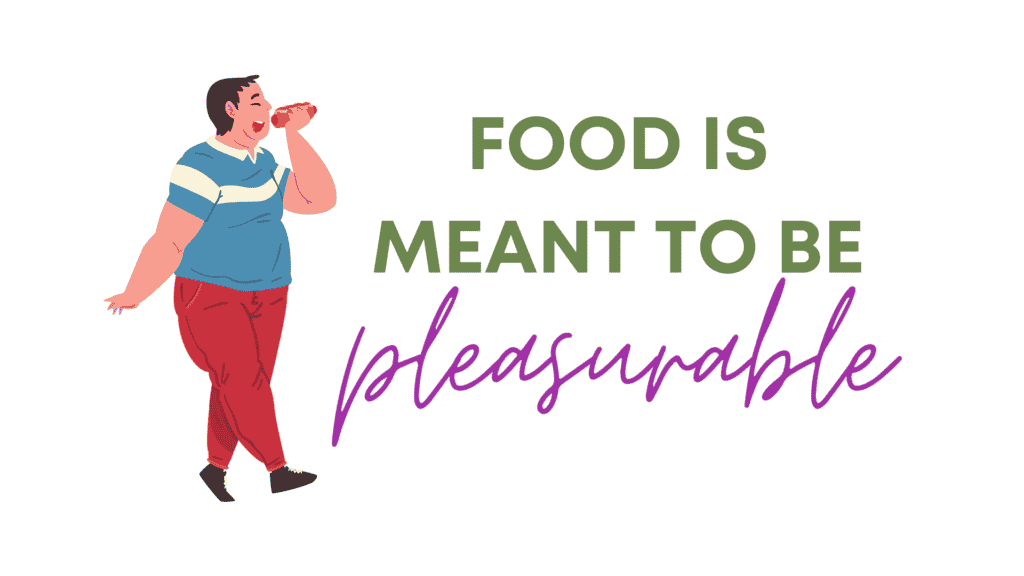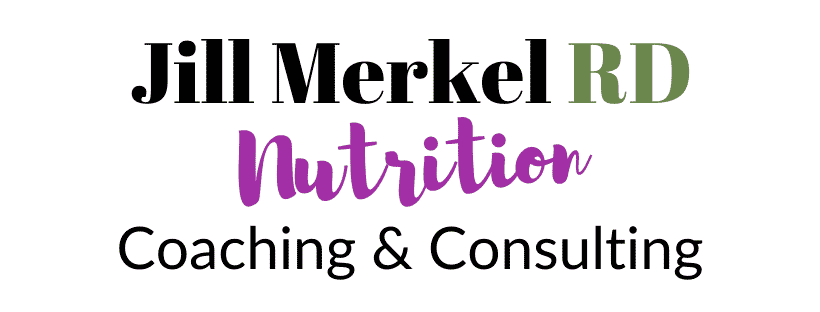This post is going to outline and explain the 10 Principles of Intuitive Eating.
Are you new to Intuitive Eating? Maybe you’ve heard of it but aren’t really sure what it is.
Well, I’ve got you covered! In this blog post, I go over what Intuitive Eating is, an overview of each of the 10 principles, and recommendations on where/how to get started with Intuitive Eating.
Let’s dive in.

What is Intuitive Eating?
First, let’s start with an overview of what Intuitive Eating is.
Intuitive Eating is an evidenced-based, anti-diet approach to nutrition and health. Intuitive Eating is a book that was written by two Registered Dietitians, Evelyn Tribole and Elyse Resch, originally published in 1995. It is now on its 4th edition.
There are 10 principles of Intuitive Eating but it is NOT a 10-step program. It is a personal process for honoring your health by listening to and responding to your body’s cues, wants, and needs.
It is a compassionate, self-care eating framework that treats all bodies with dignity and respect. It is a weight-neutral model, meaning the focus is not on body shape or size, and does not promise any weight changes. Rather, it focuses on health-promoting behaviors and accepting that body diversity is natural and should be celebrated.
Intuitive Eating is a journey of self-discovery and connection the needs of your mind and body. Ultimately, Intuitive Eating is an empowerment tool because YOU are the one and only expert of you.
The 10 Principles of Intuitive Eating
There are 10 principles of Intuitive Eating, as outlined and described in the Intuitive Eating book. They are:
- Reject the Diet Mentality
- Honor Your Hunger
- Make Peace with Food
- Challenge the Food Police
- Discover the Satisfaction Factor
- Feel Your Fullness
- Cope with Your Emotions with Kindness
- Respect Your Body
- Movement – Feel the Difference
- Honor Your Health – Gentle Nutrition
Let’s take a look at each of the 10 principles of Intuitive Eating now.
The 10 Principles of Intuitive Eating – An Overview
Principle 1: Reject the Diet Mentality
Throw out the diet books and magazine articles that offer you the false hope of losing weight quickly, easily, and permanently. Get angry at diet culture that promotes weight loss and the lies that have led you to feel as if you were a failure every time a new diet stopped working and you gained back all of the weight. If you allow even one small hope to linger that a new and better diet or food plan might be lurking around the corner, it will prevent you from being free to rediscover Intuitive Eating.
Bottom Line: Diet culture is out, food freedom is in!
Principle 2: Honor Your Hunger
Keep your body biologically fed with adequate energy and carbohydrates. Otherwise you can trigger a primal drive to overeat. Once you reach the moment of excessive hunger, all intentions of moderate, conscious eating are fleeting and irrelevant. Learning to honor this first biological signal sets the stage for rebuilding trust in yourself and in food.
Bottom Line: Eat enough. Eat carbs. Eat when hungry.
Principle 3: Make Peace with Food
Call a truce; stop the food fight! Give yourself unconditional permission to eat. If you tell yourself that you can’t or shouldn’t have a particular food, it can lead to intense feelings of deprivation that build into uncontrollable cravings &, often, bingeing. When you finally “give in” to your forbidden foods, eating will be experienced with such intensity it usually results in Last Supper overeating & overwhelming guilt.
Bottom Line: Ditch the fool rules! No foods are off limits. Eat ALL foods and stop the guilt!
Principle 4: Challenge the Food Police
Scream a loud no to thoughts in your head that declare you’re “good” for eating minimal calories or “bad” because you ate a piece of chocolate cake. The food police monitor the unreasonable rules that diet culture has created. The police station is housed deep in your psyche, and its loudspeaker shouts negative barbs, hopeless phrases, and guilt-provoking indictments. Chasing the food police away is a critical step in returning to Intuitive Eating.
Bottom Line: There are no “good” or “bad” foods. Food is just food.
Principle 5: Discover the Satisfaction Factor
The Japanese have the wisdom to keep pleasure as one of their goals of healthy living. In our compulsion to comply with diet culture, we often overlook one of the most basic gifts of existence—the pleasure and satisfaction that can be found in the eating experience. When you eat what you really want, in an environment that is inviting, the pleasure you derive will be a powerful force in helping you feel satisfied and content.
Bottom Line: Food is meant to be pleasurable. It’s okay, even encouraged, to eat food you enjoy!

Principle 6: Feel Your Fullness
In order to honor your fullness, you need to trust that you will give yourself the foods that you desire. Listen for the body signals that tell you that you are no longer hungry. Observe the signs that show that you’re comfortably full. Pause in the middle of eating and ask yourself how the food tastes, and what your current hunger level is.
Bottom Line: When you eat enough and regularly, it’s easier to notice your fullness cues.
Principle 7: Cope with Your Emotions with Kindness
First, recognize that food restriction, both physically and mentally, can, in and of itself, trigger loss of control, which can feel like emotional eating. Find kind ways to comfort, nurture, distract, and resolve your issues. Anxiety, loneliness, boredom, and anger are emotions we all experience throughout life. Each has its own trigger, and each has its own appeasement. Food won’t fix any of these feelings. It may comfort for the short term, distract from the pain, or even numb you. But food won’t solve the problem. If anything, eating for an emotional hunger may only make you feel worse in the long run. You’ll ultimately have to deal with the source of the emotion.
Bottom Line: Food is an easy go-to but it doesn’t fix our problems. Time to expand our self-care toolbox!
Principle 8: Respect Your Body
Accept your genetic blueprint. Just as a person with a shoe size of eight would not expect to realistically squeeze into a size six, it is equally futile (and uncomfortable) to have a similar expectation about body size. But mostly, respect your body so you can feel better about who you are. It’s hard to reject the diet mentality if you are unrealistic and overly critical of your body size or shape. All bodies deserve dignity.
Bottom Line: You don’t have to love your body in order to respect it. ALL bodies deserve to be treated with dignity and respect, including YOURS!
Principle 9: Movement—Feel the Difference
Forget militant exercise. Just get active and feel the difference. Shift your focus to how it feels to move your body, rather than the calorie-burning effect of exercise. If you focus on how you feel from working out, such as energized, it can make the difference between rolling out of bed for a brisk morning walk or hitting the snooze alarm.
Bottom Line: Move your body in ways that feel good for you. It doesn’t have to be intense, extreme, or even structured.
Principle 10: Honor Your Health—Gentle Nutrition
Make food choices that honor your health and taste buds while making you feel good. Remember that you don’t have to eat perfectly to be healthy. You will not suddenly get a nutrient deficiency or become unhealthy, from one snack, one meal, or one day of eating. It’s what you eat consistently over time that matters. Progress, not perfection, is what counts.
Bottom Line: Once you’ve made peace with food, you can experiment with adding foods to your diet because they provide nutritional value.
Download my 10 Principles of Intuitive Eating PDF to keep this overview handy.
For a more in-depth look at the 10 principles of Intuitive Eating, check out the Intuitive Eating blog series I did with two posts on each of the principles. (Each principle above is also linked to the first blog post on that principle).
Where/How to Get Started with Intuitive Eating
- There is no “right” way of doing Intuitive Eating. If you have the book, you can begin reading it. If you have the workbook, you can begin working through the exercises.
- Maybe you want to start with an Intuitive Eating Assessment to assess where you need the most help and might like to start.
- You can also begin with the reflection questions below on this post.
- You may want to begin by following some Intuitive Eating and anti-diet Instagram accounts or listening to some Intuitive Eating and anti-diet podcast episodes.
- You may begin by choosing one of the 10 principles of Intuitive Eating that sounds the most interesting and start there.
- And of course, you may want to work with an Intuitive Eating dietitian to help you work through your own food rules, disordered eating behaviors, and navigate how Intuitive Eating works for YOU.
Reflection Questions:
- How much time do I spend per day or per week thinking about food and/or my body?
- {If you’ve dieted in the past} What was the diet experience like? How did you feel mentally, emotionally, and physically? How long were you able to follow the diet?
- What fear(s) do you have about giving up dieting and embracing Intuitive Eating?
For More Intuitive Eating Resources
Download my FREE Guide – 5 Steps to Stop Obsessing About Food and Your Body
Individual Nutrition Coaching – if you’re looking for more individualized support, check out my options for working together one on one.
Intuitive Eating Support Group for Women – if you’re interested in learning more about Intuitive Eating in a supportive, small group environment, this is the group for you!


